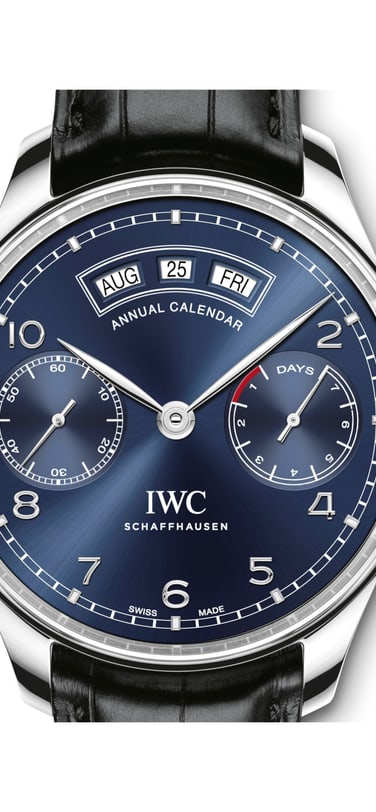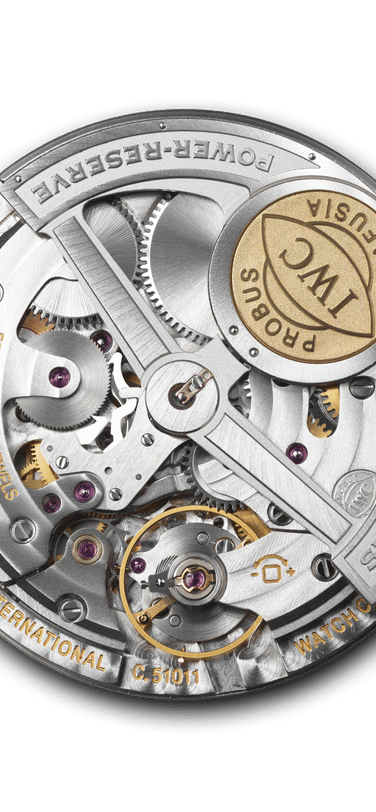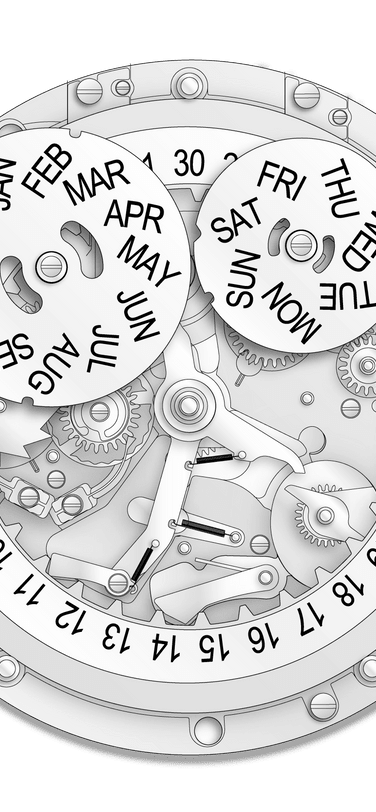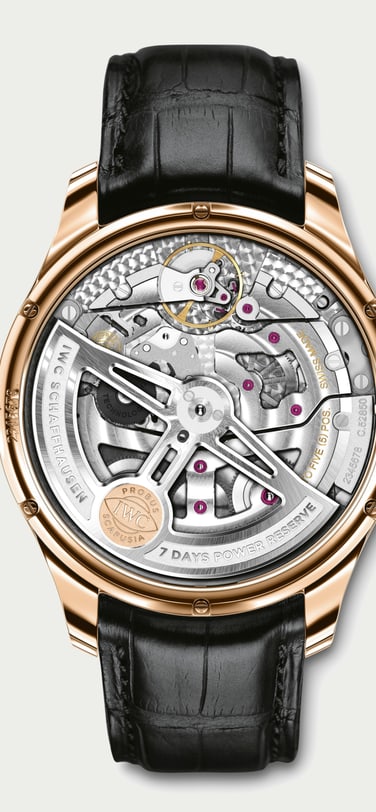World of watches
IWC ANNUAL CALENDAR: THE NEW SMALL ETERNITY
By Manfred Fritz

For generations of watchmakers it has been a conundrum: if only the year had 360 days and all the months were a uniform 30 days. If that were so, gearing a mechanical watch to the calendar would be child’s play. But in 45 BC, when Julius Caesar and his advisers gave us months with 31, 30, 29 and even 28 days, they were not thinking of doing anyone any favours.
The new IWC Annual Calendar with the 52850 in-house movement not only fills the gap between the Portugieser with a perpetual calendar and its companion with a date display. It reduces the calendar problem to a single manual adjustment at the end of February. And that‘s it.
The owner can simply forget the rest. Such as the fact that the earth completes its orbit of the sun in 365 days, six hours and nine minutes, a period known as a sidereal year. And that as a result of the time it takes to circle the sun, its orbit cannot be divided into twelve months of equal length.
But the IWC annual calendar is aware of and able to compensate for the irregularity of seven months with 31 days (January, March, May, July, August, October and December) and four with only 30 (April, June, September and November). Only at the end of the shortest month, February, which has 28 days, or 29 in leap years, does it require a few deft rotations of the crown. After the adjustment, the calendar will go on doing its job reliably for another sidereal year.
Harmoniously arranged to mirror the circular shape of the dial are three windows that follow the internationally established convention of month, date and day. Concealed behind them is the latest of IWC’s complications, and it follows one of the company’s oldest principles. The design engineers do all the thinking, with the aim of making everything as simple and intuitive as possible for the user: which explains why there are no recessed correctors in the case. When an adjustment becomes necessary, it is made using the crown.

To understand the mechanism a little better, we need to be clear about one thing. A digital display is easier to read but more difficult to produce than one with analogue hands, which can simply be mounted on pinions. Since Kurt Klaus’s flash of genius back in 1985, IWC has amassed an enormous amount of know-how on the subject of autonomous perpetual calendars. However, it had nothing to draw on for the first annual calendar in its history. So everything had to be worked out from scratch.
It all began with the ongoing development of the existing 51000 large-calibre family. All the quality features, such as the balance with precision adjustment and the Breguet spring were retained. But new ceramic components and bearings that make the Pellaton winding practically non-wearing, twin barrels and a higher frequency of 4 Hertz have turned it into the 52000-calibre family. All these steps were necessary to make a project like the annual calendar in this form, based on the Portugieser watch, possible in the first place. But there, in the case of the Portugieser, which has a 75-year tradition of being unusually large, it is set off to its best advantage. In other words, it is easier to read. And that’s the important thing.

The complexity of the mechanism is better understood if we first consider the three advance systems for each of the three calendar displays separately. The point of departure and source of energy for all the parts of the calendar is the central hour wheel. It drives a much bigger date advance wheel, whose upper surface features two securely mounted advance fingers. The date advance wheel completes one revolution in 24 hours. At midnight, one of its two clicks advances the day of the week display on the small disc beneath the right-hand window by one position. The advance procedure remains the same regardless of the lengths of the months. And that’s the good news.
The more difficult part falls to the second, shorter and more powerful of the two clicks, which moves a long date advance lever consisting of several parts and mounted at the centre of the mechanism. Its display ring with 31 inner teeth and the numbers 1 to 31 is, as usual, mounted on the outer edge of the calendar movement, where it is able to move.
In months with 31 days, a spring-mounted click at the other end of the advance lever moves the date display ring forward by one position. The change can be seen through the small calendar window in the middle of the three displays. At the end of every month, another wheel train advances the month disc, which can be observed through the left calendar window.
And this is where Caesar comes in. Strictly speaking, the calendar mechanism behaves as if there were only long months with 31 days, at the end of which the month-indicator disc is also advanced. However, to remain in sync with the actual calendar, at the end of months with 30 days it needs to move two days at once to arrive at the first of the next month.
To initiate the movement, the mechanism needs to “know” which are the short months and which the longer. This information is stored permanently in the irregularly shaped outer edge of a month cam, which completes one revolution per year. Or to put it more simply: from a technical point of view, the cam, with its eye-catching recesses for months with 30 days, covers the entire span of a calendar year. A feeler attached to the above-mentioned calendar advance lever rests on the cam and reads off the length of the months.
The distance travelled by the advance finger – and thus the entire lever – during the switching phase is crucial. It determines whether the spring-mounted date advance click at the lower end of the long lever moves by only one position or whether it also glides across the tooth for the next day and thus advances two days, one after the other.
The cam is controlled by two advance pins mounted below on the peripheral date disc (at an interval of two days). These engage with the teeth of a star wheel that moves the programmed cam forward by a precisely calculated distance. Now, in short months, the feeler falls into one of the recesses on the cam on the 30th. In this way, as described above, the lever advances the date disc by two days during the following night. In long months, the cam does not give the advance lever this kind of leeway, and it is only able to move on by one day.

For February, which is a special case, the program cam is unable to offer a solution. Left to its own devices, the calendar would advance the date from the 28th or 29th in a leap year to the 31st. However, the owner can simply move the date on to the 1st of March via the crown.
From that point until the next necessary adjustment, the balance in the automatic movement will complete another 252,288,000 beats at a rate of 28,800 per hour. And while we are on the subject of impressive figures: the twin barrels give the movement a power reserve of seven days when fully wound. The reserve is useful for the improbable event that the rotor fails to generate any movement in the ceramic pawls resting on the ceramic automatic wheel because the watch has not been worn.
Expressed otherwise, a week is composed of 4,838,400 beats. But the seven-day power reserve display at 3 o’clock provides a punctual reminder. And when the movement finally does run down, the small seconds hand at 9 o’clock, which also shows whether the watch is running, comes to a standstill. The hand can be stopped, of course, by pulling out the crown if the owner wishes to set the watch.